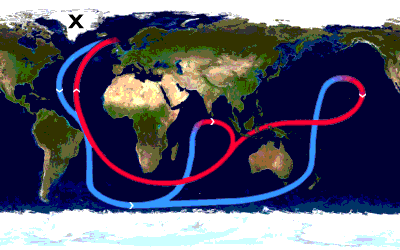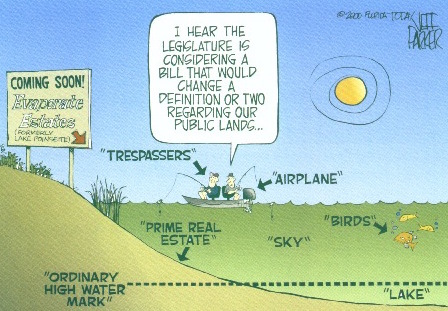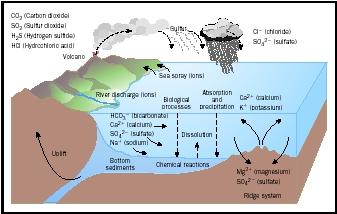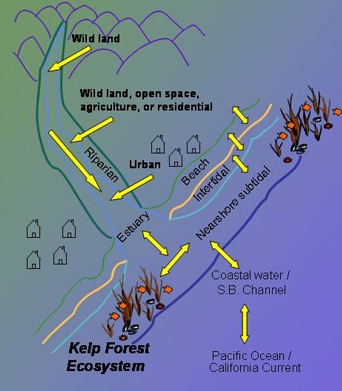 Oceanography
Oceanography Navigating the site:
Watersheds and Oceans are Companions
Oceanography is the most integrative of the sciences because it fuses earth, atmospheric, geological, and life sciences into a singular study of the very feature that sets this planet apart from our sisters in this solar system.
The study of the physical, chemical and geological properties of the seas is called oceanography, while life in the oceans is studied in marine biology. Because of the unity of the hydrological cycle and the life cycle of many fish, the rivers of the world and the oceans are a planetary circulatory system that sustains us. A watershed is the area of land that drains into a stream, river, lake, or other body of water. Watersheds can be both large and small. For example, a small stream in a rural neighborhood may have a tiny watershed. In contrast, the Mississippi River's watershed covers almost two-thirds of
North America.
When looking at the location of rivers and the amount of stream flow in rivers, the key concept is the river's "watershed." What is a watershed? Gravity pulls water downhill into one spot and the whole area that feeds that spot is a watershed.
For a view of the seashore: see Huntington Beach. The sand you see here came from a river's deposition of debris at flood. In this case the Santa Ana River drains the San Gabriel Mountains moving rock and debris to the coast. The river's drainage basin is it's watershed. If you are standing on spot of ground right now, just look down. You're standing, and everyone is standing, in a watershed. A watershed is the area of land where all of the water that falls in it and drains off of it goes into the same place. Watersheds can be as small as a footprint or large enough to encompass all the land that drains water into rivers that drain for example into Chesapeake Bay, where it enters the Atlantic Ocean.
A. absolutely necessary --Oceans create, nourish and disperse life and are thus key to comprehending our global situation.
Operate as the heat engine of the planet.
Act as a moderator of the extremes in temperature.
Are the source of the hydrological cycle.
B. biological storehouses of the existing diversity and the clues to our planet's evolutionary past.
C. climatic regulator -- stabilizing temperature fluctuations because water moderates surrounding extremes of heat or cold.
Winds, currents, and weather: Matthew Fontaine Maury
Southern Ocean oscillation, or EN-SO: El Nino / southern ocean oscillation.
D. fisheries science, birth of
plankton and productivity
restoration of "disturbed harmonies" -- George Perkins Marsh
life cycle connections among rivers, estuaries, shore, and oceans.
salmon, eel, and sturgeon fisheries.
oyster, clam, and crab fisheries.
Sovereign lands -- any submerged land under interstate waters is public property, entrusted by the 10th Amendment and the courts to the states to protect the public trust in navigation, wildlife and fisheries.
Public trust -- the volume of water contained within interstate watersheds sufficient to maintain: A, the "normal periodicity" in the flow of water, B, sufficient dissolved oxygen (DO) for the survival of fisheries and C, depth for interstate transport.
Federal Agencies with shared & concurrent jurisdictions:
Army Corps of Engineers (1802): control navigation including dredge and fill in harbors and interstate rivers and water bodies.
US Geological Survey (1881): duty of looking at the mineral & land resources.
Bureau of Reclamation (1901): drainage and fill along rivers or irrigating deserts.
U.S. Fish and Wildlife Service, (1941) habitat restoration for species.
American Community census survey
Santa Barbara coastal ecological systems
.gif)




